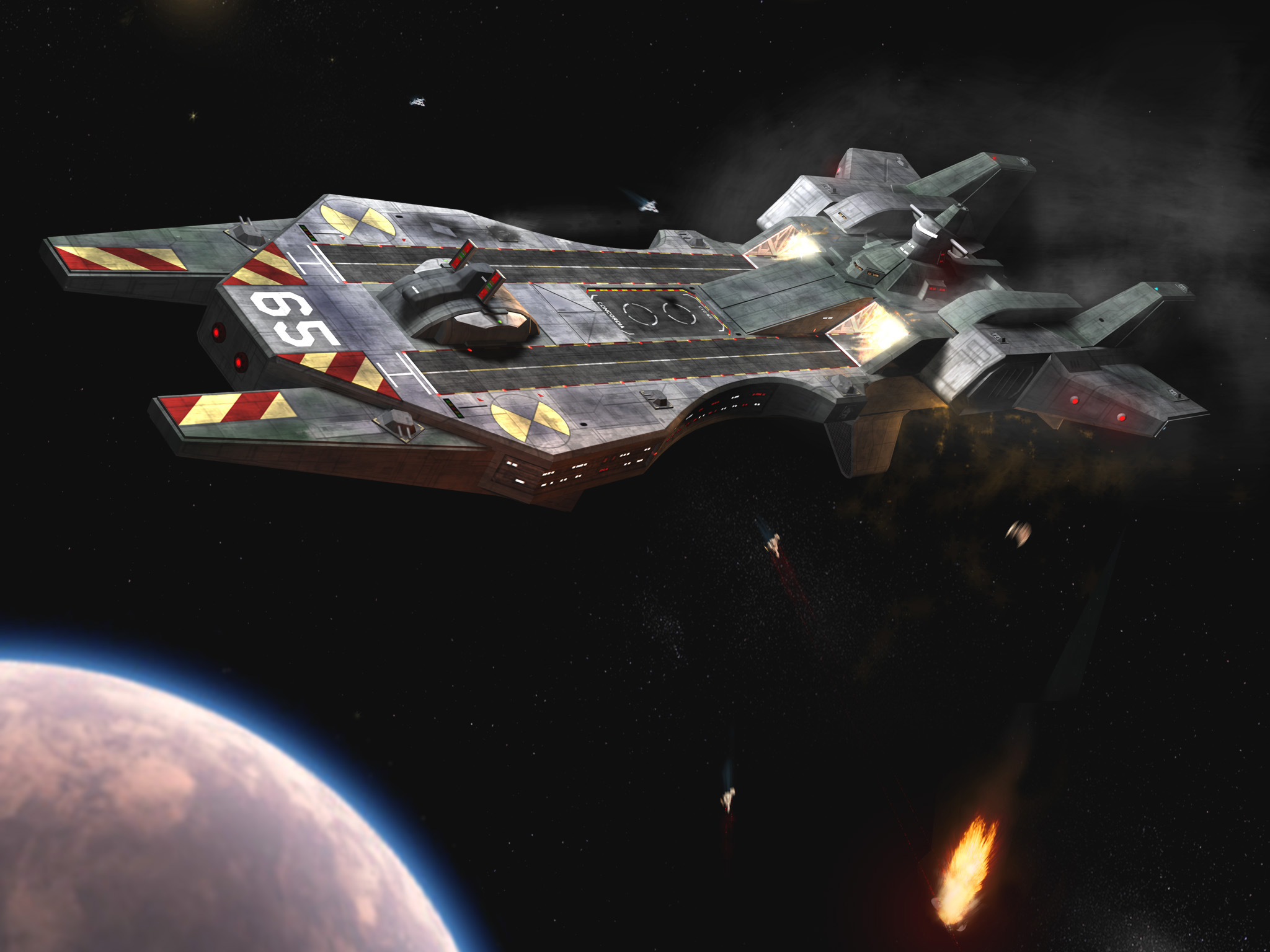That's a more well-rounded answer.Seriously? Your answer is A CUBE?
Lame. I'm going to say the Borg Sphere. Much better geometry.
Added at: 22:47
Personally, I'm a fan of The Concordia from Wing Commander.

That's a more well-rounded answer.Seriously? Your answer is A CUBE?
Lame. I'm going to say the Borg Sphere. Much better geometry.

I still haven't finished the last mission for Homeworld 1...Ah Homeworld. I should dig up my copy of that game and see if it still runs.
Why would you need aerodynamics in space?They are both clever for the aerodynamics issue (which actually doesn't hold up at high enough speeds in space dear god don't start talking about the physics of a "warp bubbles" now),

It's what we do.Oh wow the last page just started going on a complete nerd rampage.
But it does not go where you WANT to go. The funny English pilot will inspire you to the point that you give your life for the greater cause. It does not go "Wonk Wonk Wonk Wonk" when you remember to let the brake off...The T.A.R.D.I.S.
Bigger on the inside, travels anywhere, stylish exterior, comes complete with funny English pilot and sexy stewardess. It's a living vessel and powered by the greatest source of energy in the multiverse, and it also goes "Wonk wonk wonk" as is flies.
Wow, now that's badly put... pretty sure a space scientist would rip your head of for that...Because space isn't actually a vacuum, and the faster you go the less of a vacuum it actually is.
Hint: energy doesn't exist by itself...In many continuities, "shields" are used to disrupt energy weapons, not physical objects.
(which is one of the many reasons why it's hard to pit one continuum against another)
--Patrick
In both star wars and star trek, there are canonical examples of shields deflecting/destroying solid objects. In fact, the "big dish" on the front of the secondary hull of every enterprise is the "Navigational Deflector" - it's primary purpose was to deflect space debris at speed. And really, if Star Wars shields didn't stop physical objects, why bother taking down the shield generator on Endor before flying into the superstructure of the Death Star II?In many continuities, "shields" are used to disrupt energy weapons, not physical objects.
(which is one of the many reasons why it's hard to pit one continuum against another)
--Patrick
Meh, vacuum is simply the lack of pressure. The situation I described would increase pressure, therefore reduce vacuum. It is a bit like saying that you will reduce the cold by increasing the heat, since heat is actually a thing and cold is simply the absence of it.Wow, now that's badly put... pretty sure a space scientist would rip your head of for that...
Dr. Jonas Venture, Sr?Edit: also wtf is a "space scientist"?
That's quite an interesting definition of a vacuum... i went with the whole lack of matter thing myself...Meh, vacuum is simply the lack of pressure. The situation I described would increase pressure, therefore reduce vacuum. It is a bit like saying that you will reduce the cold by increasing the heat, since heat is actually a thing and cold is simply the absence of it.
A scientist IN SPACE.... (i guess astrophysician, the word just didn't come to me at the time)...Edit: also wtf is a "space scientist"?
That's not a spaceship, it's a space station. That's like saying, "What's the best car there is? FORT KNOX."Death Star.
It has a reactor that has the energy output of a small star and is capable of destroying planets in 1 shot. Just add in a few safety barriers and you're good to go.
I'd have to, LOOK AT THE SIZE OF THAT THING!At least we can all agree that it's no moon.
--Patrick
The Death Star had a hyperdrive and sublight drives, so things might be a bit blurred there. I guess it depends on the precise definition one is using.That's not a spaceship, it's a space station. That's like saying, "What's the best car there is? FORT KNOX."
A space station that can move... can your Fort do that without transforming into a giant robot?That's not a spaceship, it's a space station. That's like saying, "What's the best car there is? FORT KNOX."
In Supreme Commander, the Fatboy can. It's a ground unit factory and air resupply platform with 12 heavy artillery grouped into 4 turrets, two anti air turrets and a few short range machine guns for defense.A space station that can move... can your Fort do that without transforming into a giant robot?

Well, if we're blurring definitions, I'll just take Altantis:The Death Star had a hyperdrive and sublight drives, so things might be a bit blurred there. I guess it depends on the precise definition one is using.
No, just the most awesome...But that doesn't make it the best "tank."
